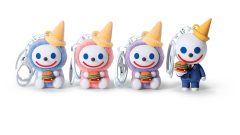10 Things You Might Not Know About Fermentation

Fermentation is a glorious chemical reaction that converts a carbohydrate/sugar to alcohol or acid. Our founding father, George Washington, was so down with fermentation that he owned his own whiskey distillery. The waste his distillery produced was used to feed his pigs, which had to have made the best tasting bacon. If you’re short one presidential distillery, but want to learn more about fermented goods, keep reading.
1. Fermentation increases the nutritional value of raw produce.

In addition to the ramped up vitamins and minerals, fermented vegetables carry friendly bacteria and live enzymes. These cultures are beneficial to both your digestive and nervous system while protecting our bodies from harmful bacteria and other toxic substances.
2. Ancient Chinese people may have fermented the first alcoholic beverage.

A blend of rice, honey, and grapes, a 3,000 year old beverage was discovered in clay pots from 7000-6600 BC. Corrosion sealed the pots over time, preserving the beer-wine hybrid for modern scientists to analyze. Dogfish Head Brewery recreated the drink in 2005, with the help of the researchers, and it won a gold medal at the Great American Beer Festival in 2009.
3. Kefir gives you a good night’s sleep.

Not to be confused with the actor from 24, this protein-rich drink contains tryptophan. That’s the same amino acid causing you to yawn after that turkey dinner. Bonus: a serving of this milk-based pro-biotic provides 20% of the daily calcium you need.
4. Soy sauce is a pain in the ass to make.

The sauce you dip sushi in takes months to produce. Its brown hue occurs during fermentation, when a chemical reaction of fungus and grain converts soybeans to simple sugars, amino acids and proteins.
5. Sourdough was more valuable than gold.

That delicious bread bowl we eat clam chowder out of was an integral part of the Gold Rush era. Alaskans would literally sleep with the dough to keep the yeast in it alive. San Franciscans enjoy their bread so much, their 49er mascot is named Sourdough Sam.
6. Kimchi is the national dish of South Korea.

Commonly found in KBBQ cuisine as one of many banchan dishes to munch on while grilling, a custom (read: non-stinky) version accompanied Yi So-Yeon, the first Korean astronaut in space. When stored properly, a jar of kimchi can last for a couple of years.
7. Tempeh is tofu’s kick ass cousin.

Photo Credit: FotoosVanRobin
While both are made from soybeans, their similarities end there. This Indonesian meat substitute has a better texture, making for tasty versions of fried chicken and tacos. The Swedish Department of Food Science even found a way to create this vegan-friendly protein without soybeans (with a blend of oats and barley) in regions where they can’t thrive.
8. Dosas are basically fancy crepes.

Photo Credit: Roland
A fermented batter of rice and lentils, this popular South Indian snack is delicate and paper-thin when grilled properly. It’s the country’s answer to sliced bread, often stuffed with pickles and flavorful chutney sauces. To eat it like a local, put down the fork and knife and get your hands in there.
9.You can wear kombucha.

Photo Credit: Lukas Chin
Microbial cellulose is the scientific term for dried kombucha culture, the “living,” tea-based beverage. A leathery texture, cellulose can be manipulated to create seamless clothing. Not bad for a fizzy and protein-rich drink that’s been around for over 2,000 years.
10. Sauerkraut helps you poop.

This bland-looking, German condiment is best known as a sausage topping. The shredded stuff shouldn’t, however, be mistaken for the pickled variety: the only ingredient mixed with cabbage is salt. Unpasteurized kraut carries the same kind of healthy bacteria found in yogurt, helping with both digestion and constipation.






















